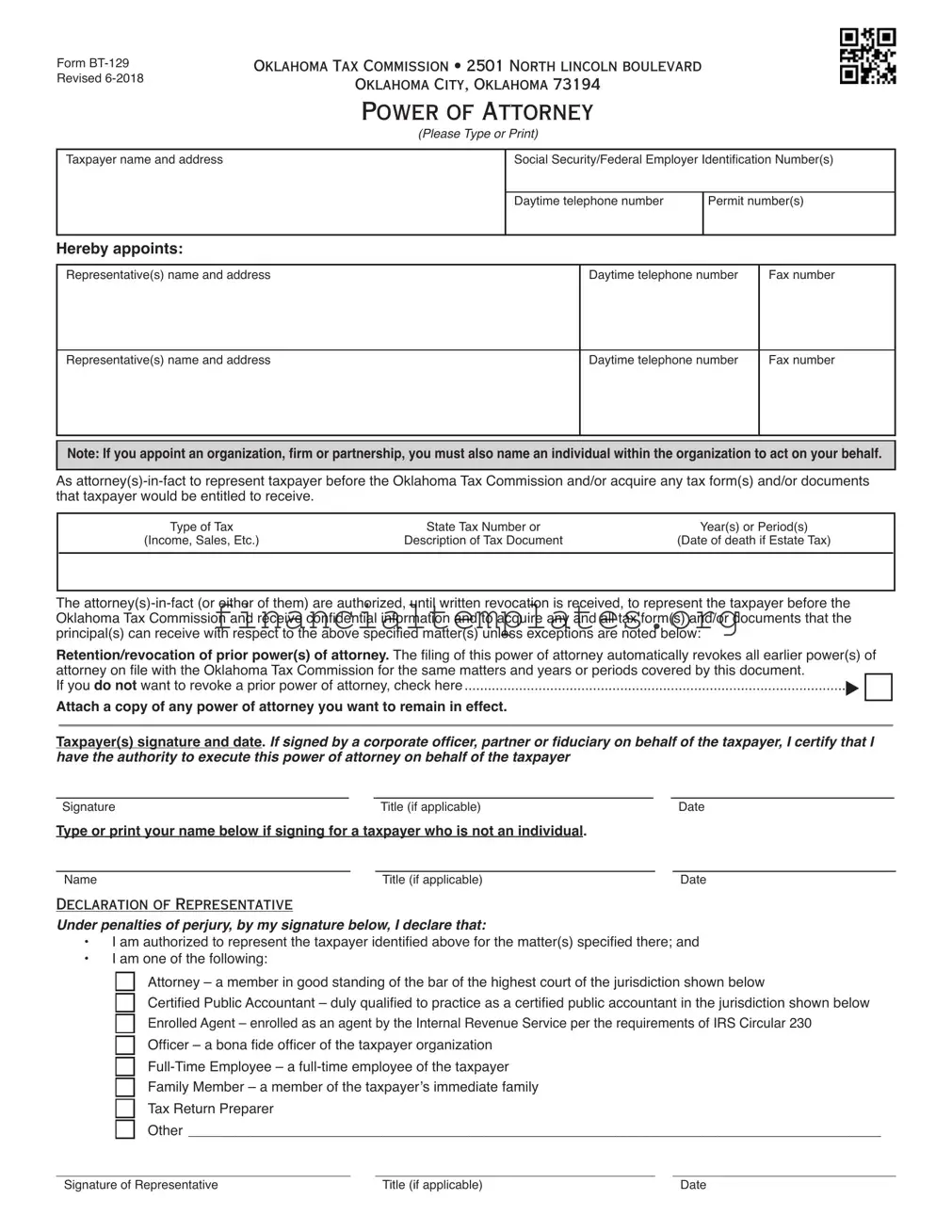The Tax Power of Attorney (POA) form BT-129 is quite similar to a General Power of Attorney document in the sense that it allows an individual to grant authority to another person to handle certain affairs on their behalf. However, while the General Power of Attorney can be broad, encompassing a wide range of personal, business, and financial decisions, the Tax POA is specifically designed for tax-related matters. This includes authority to access confidential tax information and make decisions regarding taxes on behalf of the grantor.
Another document akin to the Tax POA is the Healthcare Power of Attorney. This document permits an individual to appoint someone else to make healthcare decisions for them, should they become unable to do so. Although it covers a completely different area of one’s life, the similarity lies in the specific delegation of decision-making authority. Both types of POA allow individuals to choose someone they trust to act in their best interests within a defined scope, healthcare for one and tax matters for the other.
The Limited Power of Attorney shares a strong resemblance with the Tax POA, as both specify a confined scope of authority. The Limited Power of Attorney allows individuals to grant someone else the power to act on their behalf for a particular purpose or event, often for a short duration. Similarly, the Tax POA provides someone else authority but strictly confines this to tax-related activities, highlighting the main similarity in their limitation of scope and purpose.
Similar to the Tax POA, the Durable Power of Attorney is designed to remain in effect even if the grantor becomes incapacitated. However, the Durable Power of Attorney encompasses a broader range of powers that can include making financial and medical decisions, among others, not just those pertaining to taxes. The similarity here is in its durability; both documents ensure representation for the individual, albeit in different capacities, should they be unable to make decisions for themselves.
Finally, the Financial Power of Attorney is closely comparable to the Tax POA form in that it specifically deals with a person's financial matters, including but not limited to tax issues. The Financial Power of Attorney grants someone the right to handle financial transactions, manage bank accounts, and make investment decisions. The key similarity lies in its focus on financial affairs, with the Tax POA being a more specialized form that zeroes in on tax-related matters within the broader financial arena.









